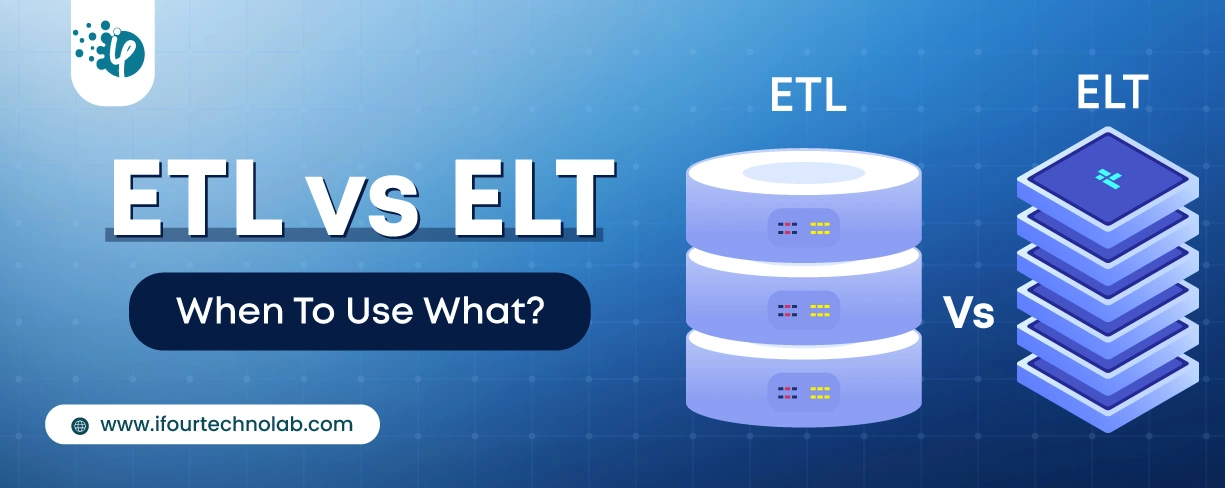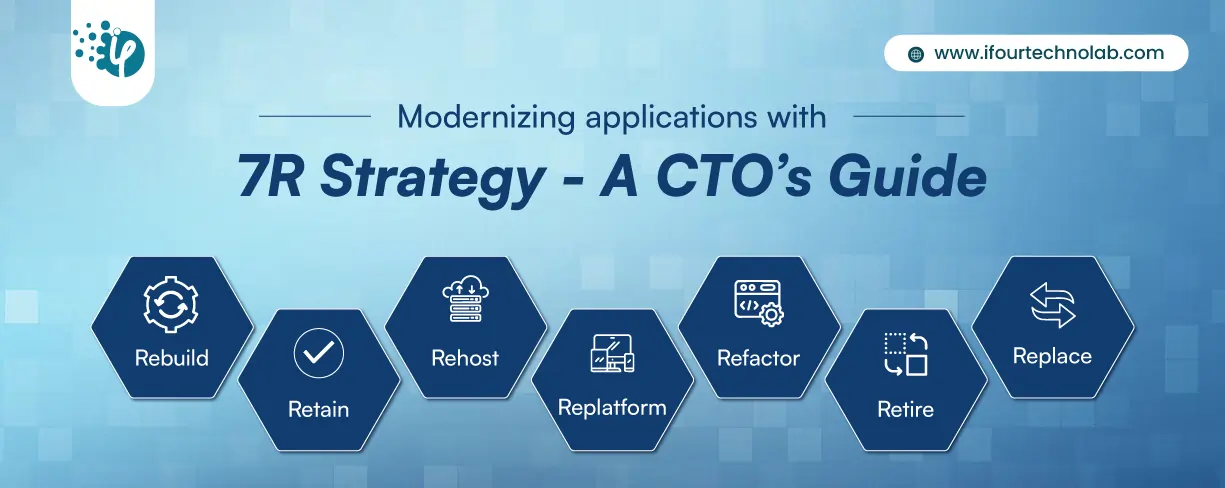ETL vs ELT: Key Differences, Benefits & Use Cases Explained
It's amazing to see how Data teams today are racing ahead - moving from traditional warehouses to cloud-native platforms, lakehouses, and real-time architectures. But in this rush,...
Listening is fun too.
Straighten your back and cherish with coffee - PLAY !

Every industry strives to improve operational efficiencies and achieve productive results. The same is true for the healthcare business as well. Improving healthcare quality is a critical endeavor for achieving success in medical practice. And technologies play a vital role in achieving this.
Technology has been the reason that healthcare experts are no longer burdened by the inconveniences of manual processes. It eliminated the need for medical staff to double-check the doctor's time, choose an appropriate day, and consult back with the patient to proceed.
In this article, we will look at the ways how collaborative technology may help to streamline healthcare workflows.
Healthcare workflows are notoriously complex and often involve numerous players across different departments and locations. This can make it difficult to track down information and get tasks done in a timely manner.
Collaborative technology, such as cloud-based applications and digital workflow platforms, can help simplify healthcare workflows by providing a single platform for all team members to access and share information. This makes it easier to track progress, identify bottlenecks, and avoid duplication of effort. In addition, collaborative technology can help improve communication between team members, which can further streamline healthcare workflows.
One of the healthcare industry's most pressing issues is improving efficiency and communication between providers while reducing the risk of errors. In response to this challenge, many healthcare organizations have turned to collaborative technology.
By definition, collaborative technology is a digital platform that allows users to share information and work together in real time. In the healthcare setting, these platforms can be used for everything from sharing patient records to scheduling appointments.
One of the major benefits of collaborative technology is that it simplifies complex workflow processes. For example, rather than faxing or mailing medical records back and forth between providers, users can simply share them electronically. This not only saves time, but it also reduces the risk of lost or misplaced documents.
Additionally, by providing a central location for communication, collaborative technology can help to improve coordination between providers.
As a result, healthcare organizations that adopt these platforms are often able to improve patient care while also reducing costs.
One of the most obvious examples of how technology can improve healthcare workflows is the improvement of the nurse call and patient satisfaction, as a result. Nurse calls used to be a very simple system of lights and/or an intercom. Now, nurse calls are integrable with other systems that are already in place and can interact with wireless technology, like smartphones. It reduces alarm fatigue, lessens interruptions, and improves efficiency of staff, proving that the right kind of technology can greatly improve healthcare workflows.
Administrators of hospitals and health systems still on the fence may be unaware of how available technology could improve their institutions. To understand the possibilities of a collaboration platform, it is helpful to evaluate how the best solutions of today assist care teams and patients and how they integrate with current systems and infrastructure.
Using mobile or desktop devices, cloud-based technologies enable all patient care team members to plan and coordinate care. A patient-specific channel keeps everyone on the same page. This simplifies communication, automates procedures, and reduces treatment time by allowing caregivers to receive and act on real-time data.
Collaborative technology can help simplify healthcare workflows by allowing different members of the healthcare team to communicate and collaborate more easily. For example, a doctor can use a collaborative technology tool to share a patient's medical chart with a nurse, or a nurse can use a collaborative technology tool to ask a doctor for advice on a patient's care. This type of technology can also help healthcare workers to quickly and easily share patient information with one another, which can help to improve patient care. Additionally, collaborative technology can help to improve the efficiency of healthcare workflows by allowing healthcare workers to complete tasks such as ordering tests or scheduling appointments electronically.
“When it comes to healthcare in an environment using Azalea or Edge or some other cloud-based collaborative healthcare tool the care point shifts from “I” to “We.” It’s no longer just “I’ll see what can be done….” it’s “We’ll take this specific next step…” and that’s because each person on the care team has the same access to the same information. Granted it’s not all relevant to each individual but it is accessible, and accessibility and speed-to-information are key in healthcare. These types of tools streamline the healthcare system, they make it easier and more efficient to get care, and then create a truly holistic view of care for a patient. It’s no longer about the I, technology has made it about the We.”
The healthcare industry seeks methods to improve in every imaginable area, as it is now weighted down by crushing costs and red tape. This is where technology enters the picture. The technology addresses two major issues in healthcare: quality and efficiency while bringing in tech-infused solutions that are being integrated into every single step of the process.
Even as simple as collaborative technology, experts in their fields are more accessible and decision-making when it comes to the best patient care possible becomes easier.
The use of collaborative technology has been shown to reduce the need for healthcare staff to spend time on administrative tasks, which in turn leads to an increase in patient satisfaction and a reduction in healthcare costs.
Collaborative technology is made up of various tools such as chat, email, video conferencing, messaging, and social media. It allows sharing of information between different departments within a hospital or clinic and helps improve communication between all parties involved. The main benefit is that it increases collaboration among all members of the healthcare team so they can work more efficiently together and make better decisions that lead to better outcomes for patients.
“Collaborative technology helped healthcare practitioners work smarter. These tools make processes and systems better integrated, thus making information easily obtainable and accessible for practitioners anytime, anywhere.
Collaborative technology has also made the patient’s experience better. Together with their healthcare provider, it is easier to communicate treatment plans and monitor progress. Ultimately, these tools allow healthcare providers to deliver the greatest quality care for their patients and achieve better treatment outcomes.”
“Hello, one of the biggest problems with healthcare has always been one doctor getting records from another doctor, hospital, or diagnostic center. Patients are usually asked to bring test results or other information with them and that can be cumbersome for the patient to arrange for a pick-up and be the intermediary between two physicians should there be questions. Collaborative technology can change all that in connecting information between offices even if they are not part of the same system. Some doctors' offices have been doing this for the past couple of years by creating a portal for their patients where all their information is kept in one place that the patient can access, view and download. Doctors working with the patient also have access, so the same information is provided to everyone on the care team. Hospitals are beginning to use this kind of tech to relay information to each other should a patient move or make an emergency visit to a different hospital. It streamlines ER visits as patients, who often aren't in a position to provide detailed information, don't have to reveal their entire history to hospital staff. It also helps when dealing with prescription medications and any complications those can bring.”
For the healthcare industry, digital collaboration technologies facilitate storing and sharing operational and care-related information in a secure and compliant way. Aimed at medical workflow automation, collaboration solutions (e.g., based on Office 365) support virtual workplaces for physicians and nurses and facilitate multiteam patient care. Administrative solutions like intranets and extranets, policy management, learning management, ticketing systems help keep medical staff up to date on the key guidelines, offer learning opportunities, automate issues resolution, and enable all-around collaboration.
The pandemic has created barriers between people and has formed artificial borders. And, in a situation like this, collaboration allows people to engage with each other without having to travel from one place to the other. Collaborative technology has fastened the pace of advancement in the healthcare sector. Collaborative technology has facilitated seamless communication and has paved way for electronic medical records- ERMs. Redundant technology that worked on pen and paper systems has been done away with and this has increased the efficiency of healthcare workflows. Patient engagement has seen betterment with the help of collaborative technology. People are now being treated at their homes and doctors are able to screen patients remotely.
“Collaborative technology connects two people who are remotely located using a system of advanced AI and ‘real-time’ integration. Collaborative technology has revolutionized how businesses and organizations used to operate. It has made working easier for people post-pandemic. It has been especially beneficial for workflows in the healthcare sector. People started preferring to be treated from their homes during and after the pandemic. In a situation like this, collaborative technology makes it easier for doctors to treat and talk to patients who are located offshore. People no longer have to visit hospitals for a word with their doctors, collaborative technology improves doctor-patient communication and allows additional features that a doctor might require for patient scanning.”
Technology has always been a major driver of change in the healthcare industry. From basic medical records and diagnostic tools to sophisticated gene-editing techniques, new technologies have continuously transformed the way that healthcare is delivered. In recent years, one of the most significant changes has been the increased use of collaborative technology. By allowing different healthcare professionals to share information and work together more effectively, collaborative technology is simplifying healthcare workflows and making it easier for patients to receive the care they need. One of the key advantages of collaborative technology is that it helps to break down silos within healthcare organizations. In the past, different departments often operated in isolation from one another, making it difficult to coordinate care. However, by using shared databases and communication platforms, healthcare professionals can now easily access the information they need, regardless of where it is stored. This enables them to make more informed decisions and provide better patient care. In addition, collaborative technology also makes it easier for healthcare organizations to connect with other organizations, such as insurers and pharmaceutical companies. By sharing data and working together more effectively, these organizations can improve the overall quality of care while also reducing costs. Collaborative technology is also having a major impact on how individual healthcare professional’s work.
Collaborative technology simplifies healthcare workflows by allowing patients to share their medical information more easily. Nurses can benefit from sharing patient records, which can help them provide better care and make it easier for doctors to identify trends in the patient's health. In addition, collaborative technology makes it easier for doctors and nurses to communicate with each other about complex diagnoses or treatments, which helps them make informed decisions about the best course of action for a particular patient.
Collaborative technology has the potential to simplify healthcare workflows and make them more efficient. It allows doctors to diagnose patients remotely, which improves patient care and decreases costs. It has made it easier for patients to communicate with their health care providers and share information in a safe way. It has also allowed the healthcare providers to see the patient's records in real time and reduce the need for paper-based workflows. It can be able to do this by digitizing patient records, integrating artificial intelligence into care management software, using digital devices for patient monitoring, and creating a system of intelligent data analytics.
Collaborative technology has been around for a long time and has been used in different industries. Healthcare is one of the industries where this technology has been widely adopted. Collaborative technology can be used to streamline workflows, reduce costs and increase productivity. It can also help with quality assurance and patient care. The use of collaborative technology allows patients more control over their health data while also making it easier for physicians to provide them with better care.
Collaboration can improve communication, save time, reduce duplication of effort, strengthen working relationships, and provide a better experience for people who use health and social care services. Collaboration among health care teams has the potential to improve patient education and engagement in their care, including behavioral changes such as information seeking and effective information delivery, patient involvement in decision-making, and patient participation in self-care. Collaborative practice in health care occurs when multiple health workers from various professional backgrounds work together to provide comprehensive services to patients, their families, careers, and communities to provide the highest quality of care across settings.
The idea of collaborative technology are tools or systems used to help in facilitating the workflows in most organizations. The healthcare organization has adopted this system to ease its workflow and to make the work more effective.
Here are the various ways collaborative technology helps healthcare workflow.
A passerby had sudden breath seizure. We made a quick call to the ambulance personnel. As soon as the ambulance arrived, The personnel ran a quick check on the victim and sent the result to the closest health center while driving to the hospital. When they got there, they had already detected what caused it and gave the victim proper treatments. In the next two hours, he got himself back and was up on his feet, as though nothing had happened to him. So, collaborative technology has made the healthcare system more effective, efficient and durable.
Collaborative technology is any type of technology that allows people to work together on a common task. In healthcare, collaborative technology can take many forms, from simple teleconferencing software to sophisticated virtual reality simulators. No matter what form it takes, collaborative technology has the potential to simplify and improve healthcare workflows in a number of ways.
First, it can help to reduce or eliminate the need for travel, which can save time and money.
Second, it can provide a way for healthcare professionals to share information and expertise more easily.
Third, it can help to improve communication and coordination between different parts of the healthcare system. Ultimately, collaborative technology has the potential to make healthcare workflows more efficient and effective.
The growth of technology has aided healthcare sectors in enhancing healthcare quality. It is the reason that healthcare professionals are no longer troubled by the inefficiencies of manual procedures. It increased operational efficiency, reduced archaic processes, improved patient care, and resulted in more productive outputs for the business. In this blog, we discussed how collaborative technology streamlines Healthcare workflows. It will help businesses in bringing tech-infused solutions for better patient care.

It's amazing to see how Data teams today are racing ahead - moving from traditional warehouses to cloud-native platforms, lakehouses, and real-time architectures. But in this rush,...

Think about the last time CTOs spent most of their time fixing old systems. Updates were slow, servers were expensive, and adding new features took time. Now, things have changed....

Remember our last Power BI forecasting guide? It uncovered what really blocks accuracy. Now it's time to take the next step. Knowing Power BI challenges is just the start - mastering...